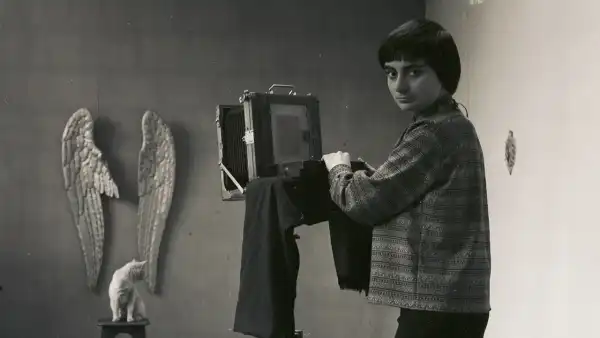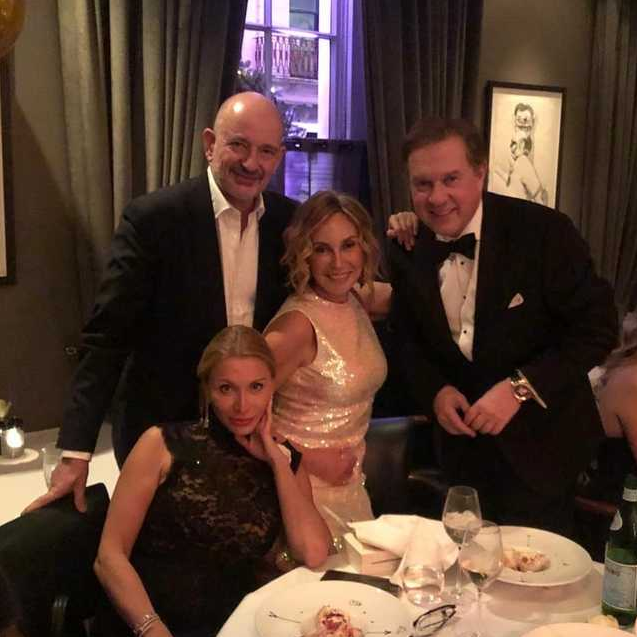
Save this storySave this storySave this storySave this story
Most filmmakers come to the set as if it were their job; it is where they make their films. Only a few make the world part of their profession. For these directors, filming is just part of the day; their films are fragments from the vast stream of their life experiences. Agnès Varda is one such person. Her art and her life were inextricably linked; she was an artist of life itself, bringing a transformative energy and creativity to everything she encountered. Thus, the world she captured reflected her own presence. This summer, the Musée Carnavalet, a Parisian museum dedicated to the history of the city, is hosting an exhibition, “Agnès Varda’s Paris: From Here to There,” that illuminates the uniqueness of her achievements, both in and out of cinema, with clarity, and enthusiasm.
The exhibition’s central theme is photography, much of it by Varda herself. Varda, who was born in 1928 and died in 2019, began her career in the late 1940s as a photographer. Several exhibitions of her photographs over the past decade, including one in New York in 2017 and one in Arles two years ago, have drawn attention to the formative influence of those works on her subsequent work as a filmmaker. The Arles show paired her photographs of the seaside town of Sète with her first feature film, “La Pointe Courte,” which was shot there. The gallery’s New York show focused on images from an exhibition Varda organized in Paris in 1954, the same year she shot most of “La Pointe Courte.” But From Here to There offers a fascinatingly broad survey of Varda's photographs and connects them to her films, especially the early ones, as well as those that were never made or, yes, that seem to have been lost.
The impulsive, shifting, protean nature of Varda’s work is reflected in the exhibition’s title. In French, it’s “Le Paris d’Agnès Varda, de-ci, de-là,” and I would translate the last part more simply than the museum does, as “here and there,” a simple dichotomy linked by the conjunction “and.” (This “and,” at once multiplying and unifying, is the perfect analogue for her vision.) The photographs themselves are plentiful, and the most striking of them, which are also among the earliest, are of Varda herself. In 1949, when she was twenty-one, she made a series of self-portraits in which she is barely recognizable. She has tousled hair combed to one side, a masculine shirt, sometimes a sailor cap, and even an expression of absentminded innocence. On the album page, these photographs are montaged with photographs of the sculptor and ceramicist Valentin Schlegel, her partner at the time. She used one of them as a professional photographer's card, issued in 1950. (She began her career in 1948, when she was invited by the theater director and impresario Jean Vilar, the husband of a friend, to take publicity photographs for his productions.)
In fact, it’s astonishing to see Varda before she became famous. If these photographs, an implicit search for her own image, form a kind of question mark, what appears in the exhibition feels like an exclamation: a self-portrait from 1950 in which Varda sports the bowl cut that would become her signature for the rest of her life. Varda prepared herself meticulously for the photograph, using dark makeup to add shadows under her eyes and emphasize her jawline, and the result underscores with theatrical formality her new and, as it turns out, final identity. It’s a face with a determined, direct, assertive, penetrating expression that she would wear forever.
Varda’s new look reflected her approach to both her work and her life, and it also signaled a fundamental and definitive change in that approach. In the late 1950s, Varda discovered a pair of neighboring former shophouses on rue Daguerre that were unheated and had only an outdoor toilet. Her parents purchased the property for her, and she converted it into two workspaces. For Schlegel: a sculpture studio on the ground floor. For herself: a darkroom, also on the ground floor, and a photography studio upstairs, under a skylight. (This was to be Varda’s home and workspace for the rest of her life.) As a theater photographer, Varda had learned to direct her subjects, creating moments that not only documented but reimagined the plays for the camera. She brought a similar sensibility to portraiture and even street photography, adding an element of artificiality; she attached a pair of life-sized angel wings to the wall of her studio and positioned people in front of them, as if in costume. Her photographs from the 1950s are full of drama, showing a dynamic relationship with the space and action behind the scenes. Take, for example, a strikingly vivid series of portraits of friends and neighbors (including the sculptor Alexander Calder) taken in her backyard, or a 1956 photograph of actress Suzanne Flon, bundled up under her coat collar, next to two unidentified passersby peering into the street at
Sourse: newyorker.com






